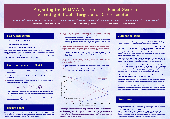Preparing the PRIMA Astrometric Planet Search: Selecting Suitable Target and Reference Stars
poster presented at Astronomical Telescopes and Instrumentation 2004
SPIE Conference, June 21-35 2004, Glasgow, Scotland
Proceedings of New Frontiers in Stellar Interferometry,
ed. W. Traub, SPIE Vol. 5491, 2004
Abstract
|
ESO's PRIMA (Phase-Referenced Imaging and Micro-arcsecond Astrometry)
facility at the VLT Interferometer on Cerro Paranal in Chile is expected
to be fully operational in only a few years from now.
With PRIMA/VLTI, it will then be possible to perform relative astrometry
with an accuracy of the order of 10 microarcseconds over angles of about
10 arcseconds.
The main science driver for this astrometric capability is a systematic
search for extrasolar planets around nearby stars.
Target stars as well as reference stars for this astrometric planet search have to be very carefully chosen in order to make the measurements robust and effective. Most importantly, reference stars have to be astrometrically stable to only a few microarcseconds in order to provide a suitable reference for the astrometric measurements. Target stars should be located at small distances so that a possible planet would cause a detectable astrometric signal. Moreover, a suitable target star and a suitable reference star have to be found within about 10 arcseconds of each other to ensure the highest accuracy and effectiveness, which obviously requires some trade-off in the final target list. Possible strategies and preparatory observations for the assembly of a suitable target list for the astrometric planet search with PRIMA/VLTI will be discussed. |
| scaled down poster version (about DIN A4 or letter size) | [ps, 985 kb] |
| proceedings paper |
[ps, 383 kb]
|

 link collections
link collections